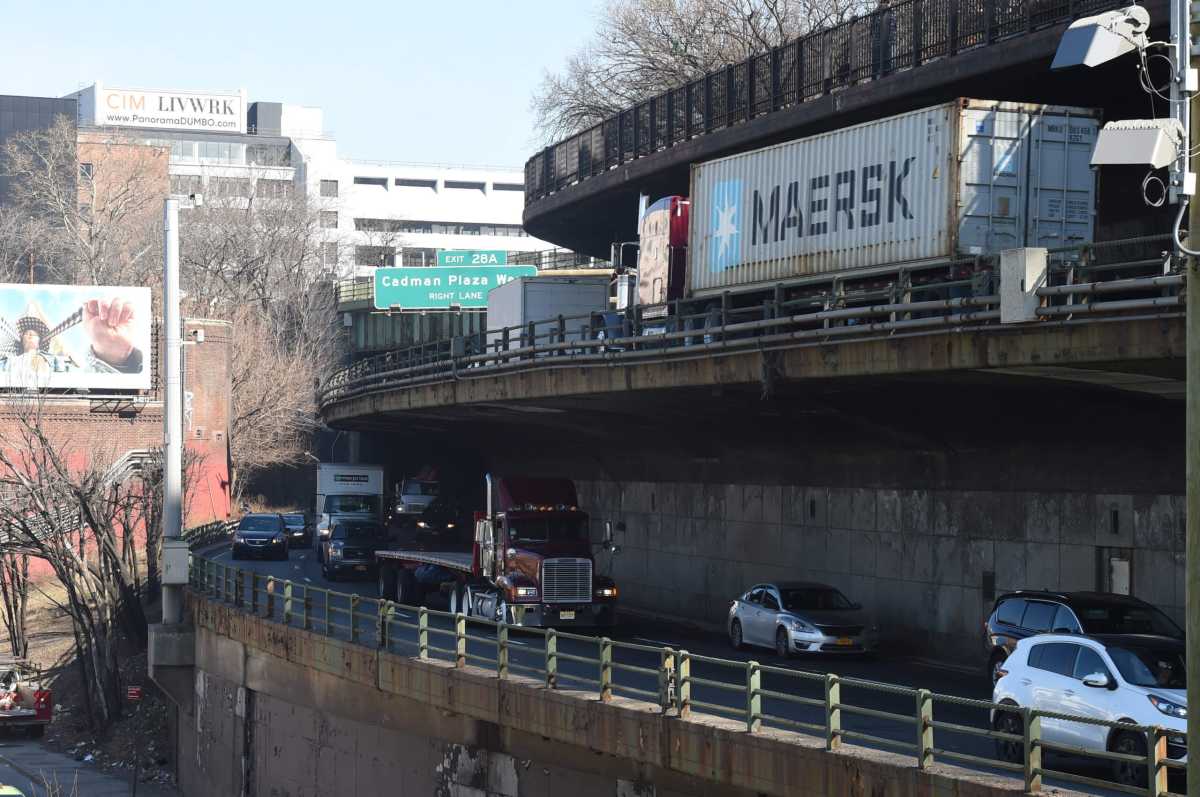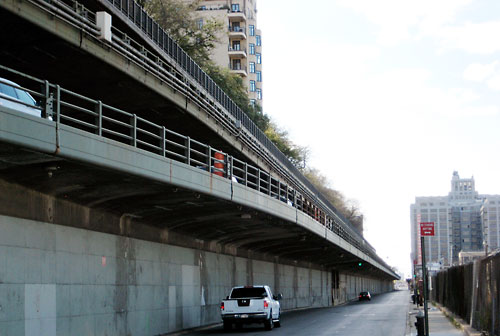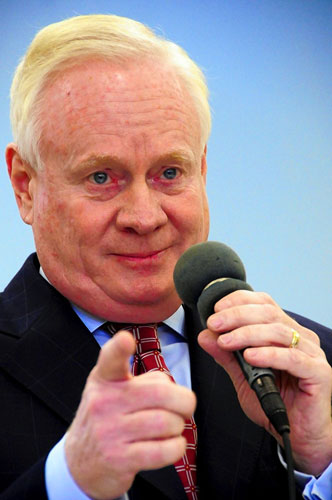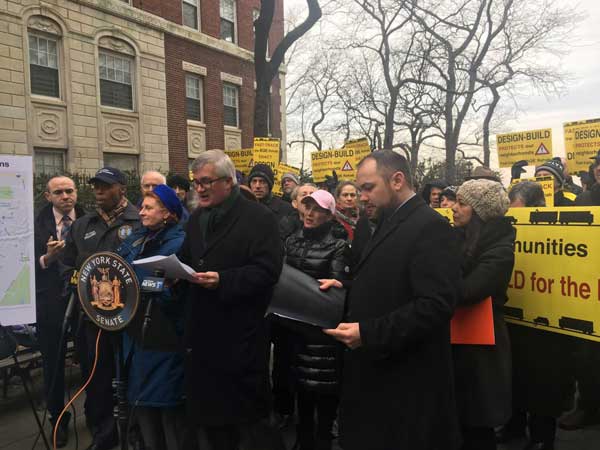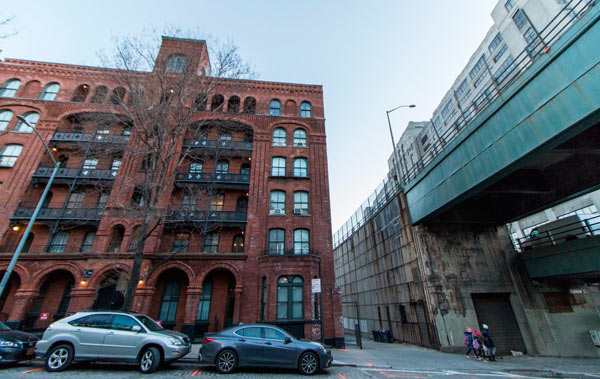Statement of fact: Everyone hates the BQE.
And rightfully so. It was poorly (and discriminatorily) conceived, poorly designed, poorly constructed, poorly maintained, and now is rotting away as it nears the end of its service life.
Let’s be done with it altogether. Time to reimagine this entire roadway!
Wednesday’s NY1 debate for the 10th Congressional District shined a bright light on the need for immediate action to be taken before worst-case scenarios start to become inevitable.
I chaired an expert panel of incredible and talented New Yorkers assembled by then-Mayor Bill de Blasio in 2019 to evaluate options for replacement of the decrepit roadway. Along with leaders from academia, labor, civic organizations and industry groups, and in consultation with elected officials and community groups, the panel did not identify a “silver bullet” solution for all of the BQE’s woes. We did, however, suggest immediate actions that needed to be taken, and asserted that it was not just the 1.5-mile cantilever stretch of road along the Brooklyn Heights waterfront that was at issue, but the entire, corridor-wide roadway — from Bay Ridge to Astoria — that needed a new vision for the future. And fast.
That was in January 2020. Obviously, the world changed dramatically two months later. But we’re nearly three years down the road from that now, and, frustratingly, little has been done to heed our urgent call to action. So I must restate what has been my contention since then, and those who know me well know exactly what I’m about to write:
Tear it down — now!
Having studied the issue in detail for more than a year, I understand it’s not as simple as that, so I’d like to explain exactly what I mean when I say, “tear it down.”
We have new technologies and construction methods now that would have been incomprehensible to a worker building the original roadway in the early 1950s. As innovative as the Brooklyn Heights triple-cantilever construction was back then, we’ve leapfrogged such quaint accomplishments since. It’s time to push the envelope on ingenuity and reimagine the entire BQE with the only limitation being just that – our collective imaginations. As the panel stated, “[We] strongly urge an assessment of the role to be played by this highway going forward. We do not accept the premise that the highway must be rebuilt in its current form to accommodate more cars and trucks.”
What if the entire roadway also included protected bike lanes to encourage people out of their cars with a safe, more direct route between Brooklyn and Queens? What if sunken sections of the roadway were capped and had parks and public spaces developed on top — reconnecting communities torn apart by Robert Moses generations ago. What if ugly elevated sections could be torn down and replaced with tunnels that would not be blights on their surrounding streets and, rather, open up those streets as green boulevards? What if we implemented smart road technology? The list goes on and on.
In the name of sustainability and equity for the communities impacted, all of these must be considered. Climate change is here, real and relentless. The residents along this corridor — as well as the hundreds of thousands of drivers across the entire metropolitan area — have suffered enough.
Is this a mammoth project I’m talking about here? Of course! Perhaps the largest infrastructure project in this city’s history. But the aim is true — to correct wrongs of the past and establish a new precedent for transportation infrastructure, one that considers community first, adapts the latest in technologies, accounts for more than just four-wheel motorized vehicles and looks to reduce their numbers, and is incorporated into neighborhoods rather than dividing them.
The time to act was yesterday, and the newly passed Infrastructure Investment and Jobs Act (IIJA) funding means we may never get a shot this good again to attempt the previously unthinkable — rebuilding the BQE section by section. Will it be painful? Yes. Will it be messy? No doubt. The BQE has already proven itself to be both of those things, daily, for nearly 70 years now! Short-term pain shouldn’t stop us from doing what needs to be done.
The first step is admitting we have a problem. Our panel proved that beyond a doubt. Minor corrective actions taken since are band-aids on cracks in the dam. One need only look at “spalling concrete, deteriorated joints, exposed rebar in the retaining walls and wood shoring [as] signs of a structure in distress,” as noted in our report. The worst-case scenario is one we do not want to contemplate, but grows nearer every day. The solutions are out there, it will just take political courage for our elected leaders to step up and act.
So let’s all come together now. City, state and federal officials, with a strong emphasis on community participation, must convene a joint working group immediately, and develop a comprehensive Transportation Management Plan (TMP) for moving forward with the utmost urgency. The clock is ticking. The money is out there.
Let’s reimagine and rebuild the city’s biggest mistake. NOW!
Carlo A. Scissura, Esq., is the president and CEO of the New York Building Congress.


